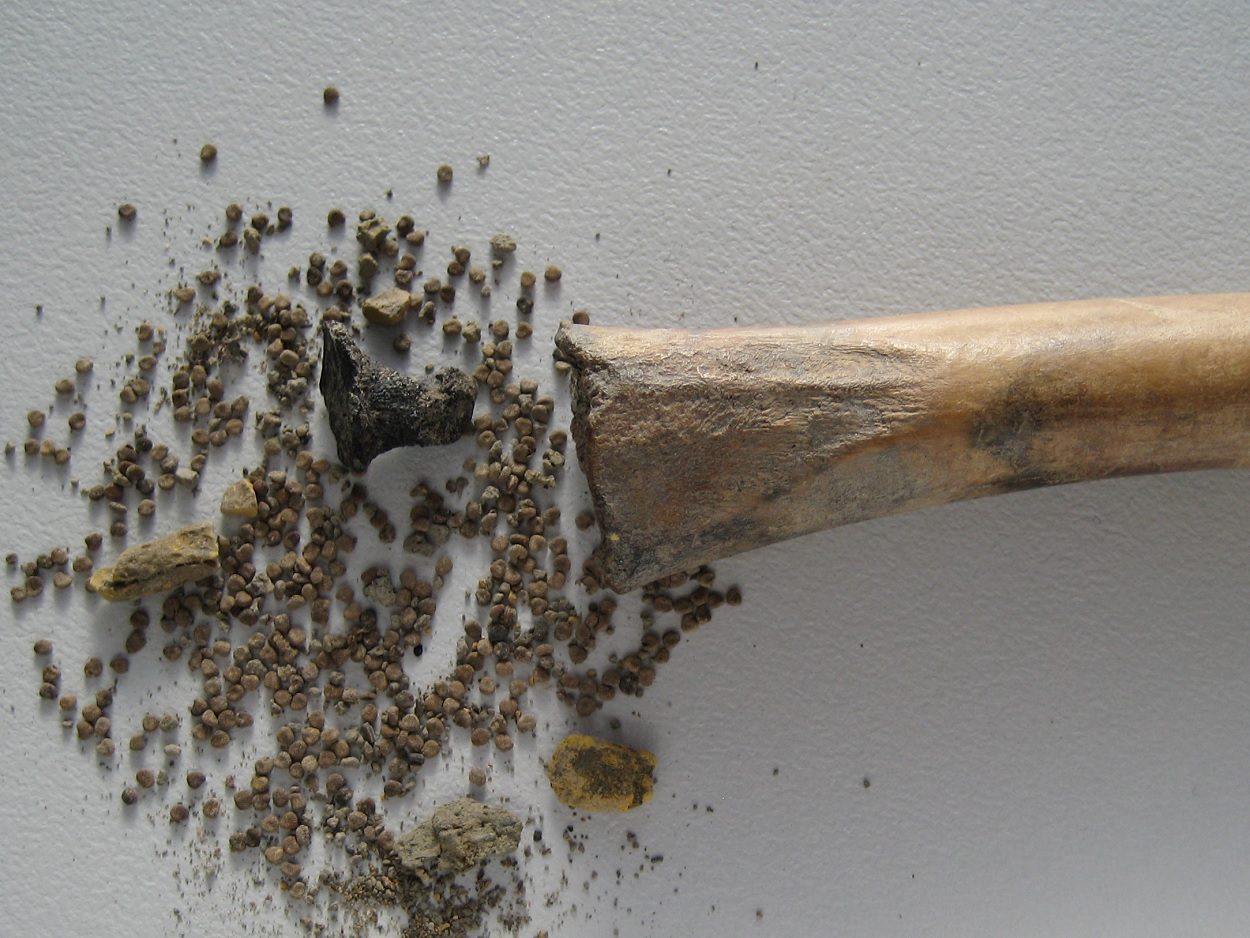Archaeologists have uncovered a hollowed bone containing black henbane seeds, providing the first conclusive evidence for intentional use of the plant as a medicine or narcotic during the Roman period.
Henbane, also known as stinking nightshade, is a highly poisonous plant known to be used as an ingredient to make anaesthetic potions and for its psychoactive properties in inducing visual hallucinations.
The use of henbane during antiquity was documented by the historian, Pliny the Elder, who said it was “of the nature of wine and therefore offensive to the understanding”, and by the Greek physician and botanist, Pedanius Dioscorides, who recommended it as a sedative and analgesic.
The discovery was made during excavations of the Roman-period settlement of Houten-Castellum in the Netherlands. The team found a hollowed out bone containing hundreds of black henbane seeds, which were sealed in the container with a black birch-bark tar plug.
“Since the plant can grow naturally in and around settlements, its seeds can end up in archaeological sites naturally, without intervention by humans,” says lead author of the research, Dr Maaike Groot from the Freie Universität Berlin. “This is why it is usually classed among wild plants/weeds in archaeobotanical studies.”
As part of a wider study (the results of which are published in the journal Antiquity), the team compared examples of black henbane seeds found at other sites to see if there was any correlation. However, it soon became apparent that the discovery at Houten-Castellum is the first example of black henbane in a container from the Roman period.
“Our study contributes to the discussion of how to distinguish between a weed naturally ending up in archaeobotanical assemblages and a plant intentionally used by people”, says Dr Groot. “We argue that future finds of black henbane should be studied by taking into account the context of the find and its relation to other medicinal plants.”
Header Image Credit : Antiquity Journal





